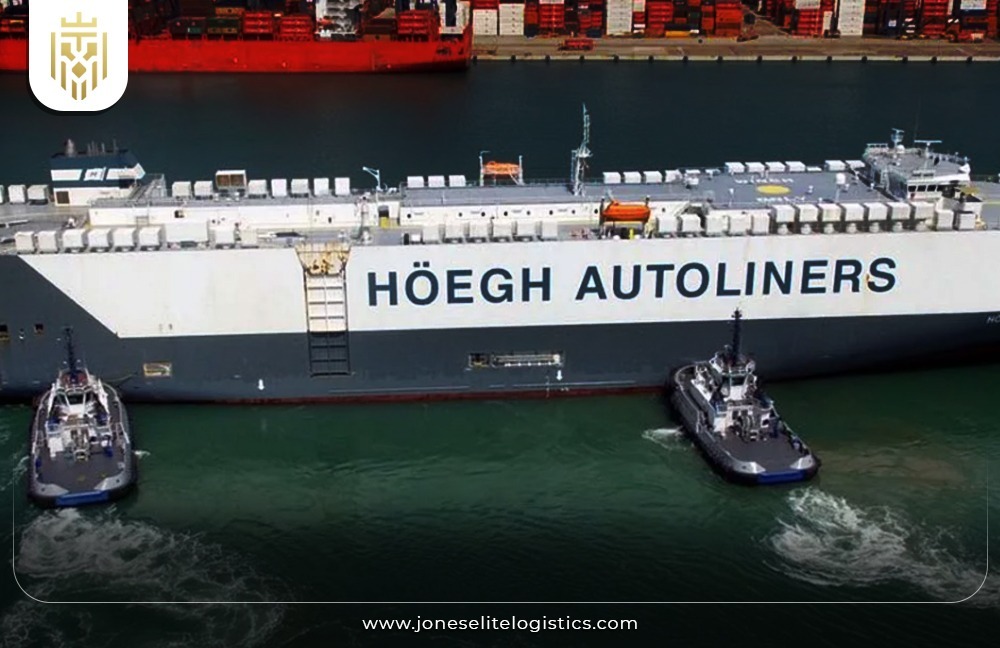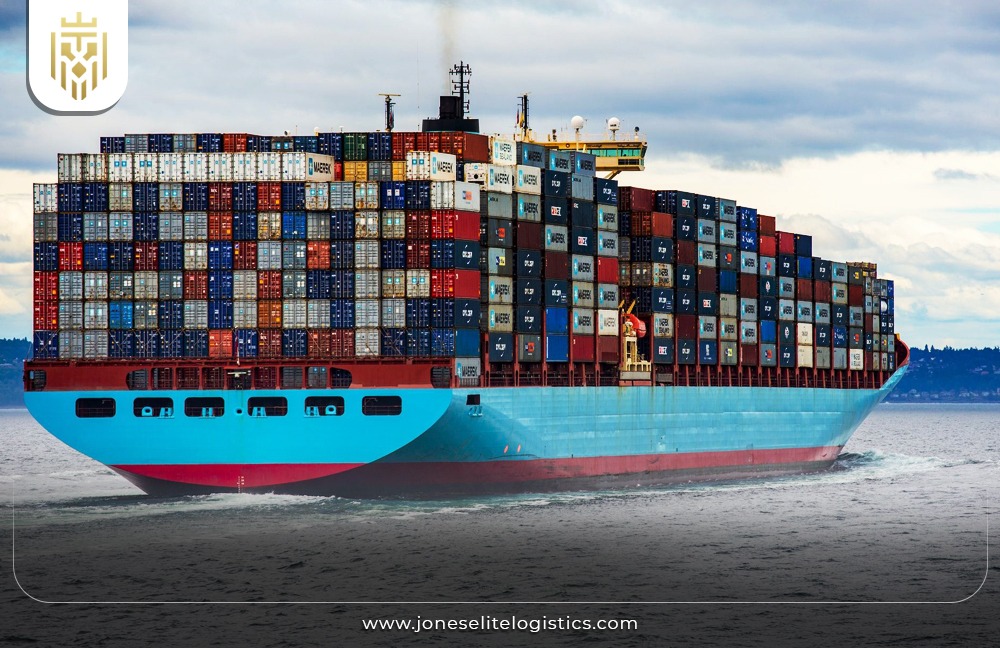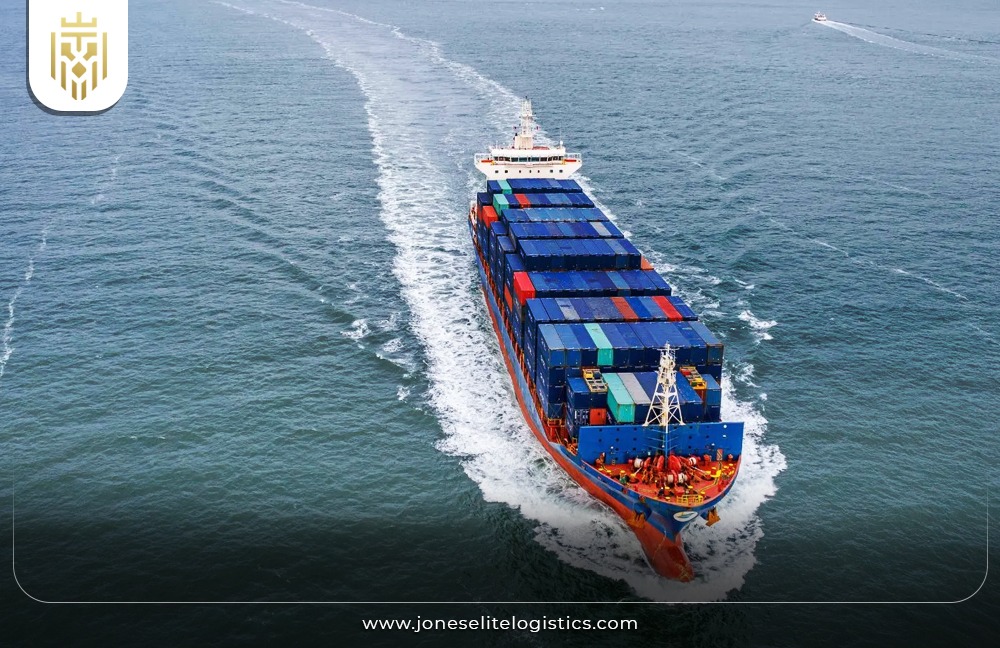What is Sea freight?
Sea freight is the movement of goods by water in packages or containers through ships or boats. This method of transport is cheaper particularly when moving large volumes of consignment across national borders. Cargoes are usually packaged in a container, the container is then shipped in vessels that transcend across the seas to their intended destinations. Sea freight is given a choice due to its advantage in the transportation of large volumes of commodities through the sea at a cheaper cost compared to the air transport sector.

Who Utilizes Sea Freight?
All kinds of businesses such as manufacturing, wholesalers, and retailers make sea freight as part of their logistics process. This is especially true for organizations that require the use of large quantities of resources in their business and those that require the transportation of resources over substantial distances. The automotive manufacturing industry, the electronics sector, the textile industry, and the agricultural sector are some of the industries that can under certain conditions benefit from sea freight.
How does Sea Freight Work?
Sea freight involves several steps: acquiring a hold on the vessel, packing the articles into containers, transporting these to the particular terminal, loading them onto a specific kind of cargo ship, and moving them to the port where the goods are to be off-loaded. Once at the terminal, they are discharged to their ultimate place in the supply chain by truck or rail. These involve a great deal of documentation and customs clearance as every stage needs to be by the laws of different countries.
What types of goods are most suitable for Sea Transport?
The products best sold through sea transport are those that do not require short delivery times such as foodstuffs, manufactured goods, heavy equipment, vehicles and auto spare parts, raw materials, and most commodities. Sea freight is the most appropriate mode of transport for these goods due to the large capacity ship availability, and the low cost of moving large volumes, over long distances.
Non Perishable Goods:
The value-added products including apparel, electrical appliances, furniture, and industrial goods are suitable to be transported at sea. Since these items can take a long before they reach the market and do not require any form of preservation that may be affected by long-distance transport then sea transport is cheaper.

Heavy Machinery:
Large lumpy goods such as construction equipment, agricultural machinery, industrial machines, and other machinery equipment are suitable to be transported through sea. These products are usually bulky and weigh a lot, and will thus prove costly to transport via air transport. Sea freight proves more convenient in this regard since it has adequate space and can accommodate the required weights for these massive shipments.

Vehicle and Parts:
Cars and automotive parts like vehicles and components are transported through the sea channel among other things. Thus, sea transportation is an inherent part of the automotive industry since it is known for its ability to transport a large number of cars and spares cheaply. These items that are highly vulnerable to theft are transported using such specialized containers and Roll-on Roll-off ships to secure areas in cross-continental transport.

Types of Sea Freight Services:
Sea freight services serve different logistics needs with a focus on various types and sizes and provide competitive service solutions to shippers as required. The types include:
LCL:
Less than Container Load (LCL) consolidates shipments originating from various shippers in one container. Used in the transportation of goods that would otherwise require the booking of an entire vessel, this is cheaper owing to the sharing of transportation costs. LCL is very advantageous as it provides for forwarding smaller consignments than the full container loads, and more often.
FCL:
Full Carrier Load (FCL) is the type of transport that is utilized when a single supplier’s merchandise occupies the available space in the shipping container. LCL service can be best suited for big shipments since it offers some advantages compared to FCL service including, less handling, less chance of getting damaged, and less transit times. FCL helps to guarantee the utilization of the container by a single user which leads to security in the shipment and efficiency.

Dry Bulk Shipping:
Dry bulk shipping refers to the transportation of unpackaged commodities in large quantities, with examples being grains, coal, iron ore, and cement. Such carriers are known as ‘bulk carriers’ these are ships designed for this particular task and built to accommodate large amounts of homogenous material. This method is efficient and cost-advantaged for industries dealing in large volumes of large bulk commodities.
RORO:
Roll-on/Roll-Off (RORO) shipping is basically a form of transportation specifically aimed at wheeled cargo including automobiles, trucks, trailers, and equipment among others. The car drives onto and off the ship, thus making the loading and unloading procedure more manageable. RORO ships are very safe and suitable for moving cars and bulky equipment without the need for extra equipment for loading and offloading.

VGM:
Verified Gross Mass (VGM) corrects the weighing of containers before loading onto the ship and therefore promotes the correct measurement for handling by the shipping line. This regulation is safety-enhancing because it limits the possibility of overloading in the vessel, and makes sure that the load dispersion in the vessel is appropriate.

Benefits Of Sea Freight Services:
Sea freight services have some added benefits, which is why they remain a popular and commonly used method of transport. Some of the visible advantages of using conveyor belts include safety, eco-friendliness, high productivity, worldwide presence, dependability, and minimal likelihood of damage to the conveyed items.
Safety:
The services offered in sea freight transport are safe and protective to transport the goods hence time-bound services. Products are placed inside the container which is sealed, thus having less possibility of theft or damage occurring. Adopting high standards of security and meeting international standards means that there is the safety of the cargo from its origin to the delivery point.

Environmental Friendly:
There is a significant difference in carbon dioxide emissions whereby sea transport has a lesser emission of CO2 per tonne per unit of distance. The latest vessels used in carrying cargo are constructed in such a way that they’ll consume minimal fuel and emit less; therefore, sea freight is more environmentally friendly. This lessens the emission of greenhouse gases and encourages the practicable use of transport.
High Capacity:
Sea freight is highly flexible and has the largest cargo-carrying potential, which is impossible to achieve with any other means of transportation. For this reason, it is good for use in situations where large volumes of shipments are being made or large cargo is being transported. Larger ships are needed meaning that the amount of cargo transported far exceeds what can be moved by the use of other transportation means, making the mode suitable for large consignments.

Global Reach:
Sea freight services are international in nature as they involve the movement of products through the seas across different ports. This vast network helps businesses transport products to and from almost every place they want, the flow of trade between nations. One of the chief guarantees that strategic supply locations are easily accessible is that of sea routes and the availability of ports.
Reliability:
Compared to air freight, sea freight has structural reliability with harmonized schedules and routes. Players in this industry offer standard services to counterpart shipping companies to provide a standard supply of manufactured goods. Compared to air freight, sea freight may not offer as fast deliveries; however, regular timetables for shipping provide its consumers with reliability of delivery.
Reduced Risk of Damage:
Sea freight has the advantage of requiring little handling hence having less chance of damage to the goods. These come closed from its origination point to the place it is required with minimal contact with the environment or forceful handling. The peaceful and steady nature of cargo ships also guarantees the security of goods by intact, and reachable in perfect condition on arrival.
Disadvantages of Sea Freight:
Below are the demerits associated with sea freight though it has many benefits as we have seen in the above points. It is important for businesses to be aware of each of these disadvantages when devising their logistics strategies.
Limited Capacity:
There are also constraints in terms of some routes and certain ports having limited throughput capacity to allow for congestion and delay. As for the limitations, small ports can only handle limited traffic, and cannot receive large ships, which leads to the limited volume of cargo. This limitation may slow down the delivery process and also cause long periods for clients’ delivery due to high demands during some periods in the year.
Time Consuming:
Unlike air transport, sea transport is relatively slower and it may take days and sometimes weeks to months depending on the distance and the chosen route. This can be a disadvantage for business outlets where goods have to be returned to the store frequently. The implications that may be adopted from this include slow transport pace, visibility challenges, shift in supply chain efficiency, and inventory maintenance.

Lesser Connectivity:
Unlike air transport, sea freight has comparatively less connectivity, and the availability of ports and prices are comparatively low. A few inland or some other faraway places might not be situated close to ports for shipping and hence require other modes of transportation. It can also pose some operational challenges such as having to deal with multiple modes of transport that lead to high costs.
Tracking Goods:
One of the limitations of sea freight is that proper tracking when goods are being shipped is very difficult. While air freight offers extended visibility by giving updates in real-time, sea freight could sometimes be relatively opaque. Some of the cons of using GPS tracking include; The speed at which information concerning the consignment’s progress and location is relayed can be very slow.
How Jones Elite Logistics can help you?
With the sea freight services provided by the Jones Elite Logistics it is possible to simplify your shipping in every possible way. Well-experienced in logistic control, they will effectively manage your goods as they transport them to their respective destinations. From its tailored services, Jones Elite Logistics offers services in LCL and FCL shipments, customs clearance services, and real-time tracking, making it easier to manage the shipment process. The company has reliable connections globally due to its network, and they are keen on safety and compliance. If you make use of the services of Jones Elite Logistics your supply chain is able to be well managed and your goods delivered to your clients on time at the lowest cost possible.
FAQs
1) What is sea freight?
Sea transport is a method of transporting goods through sailing, using cargo vessels. It is a business of moving a substantial number of products in manufactured or non-manufactured carriers across international waters thus enabling traders to negotiate costs for long distances.
2) What are the advantages of sea freight?
Some of the benefits of sea transport include cheaper for large volumes, high volume carrying capacity, eco-friendliness, multi-location, and fewer chances of damage as the consignment is handled least times.
3) What are the challenges of sea freight?
Limitations of sea freight are slower transit time as well limited availability or capacity on specific routes, lower accessibility to remote locations, and track and trace capability of products.
4) What are the types of sea freight?
There are different categories of sea freight which include Less than Container Load (LCL), Full Container Load (FCL), Dry Bulk Shipping, Roll-On/Roll-Off (RORO), and Verified Gross Mass (VGM).







